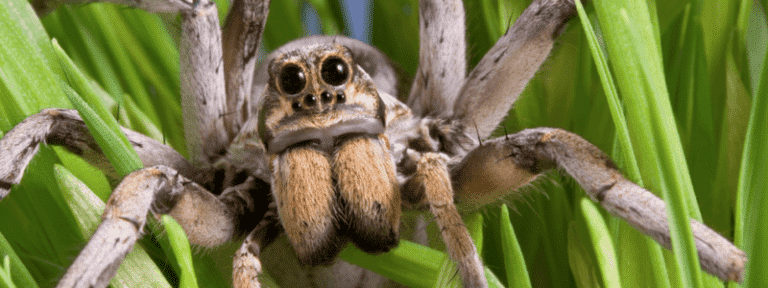Here’s a guide to the most common household spiders and preventative measures for staving off potential infestations.
In this blog, we’ll look at the following:
- Why do I have spiders in my house?
- What puts your house at risk for a spider infestation?
- How do you know if your house is infested with spiders?
- Most common house spiders in Arizona
- How to prevent spiders in your home
Why Do I Have Spiders in My House?
Spiders are looking for places to take shelter, find food, and lay eggs. As the weather and their mating timetable dictate, these are seasonal occurrences, so you’ll often see spiders come out in the fall and winter months.
Spiders look for clutter and bugs to eat, so cleanliness and pest control can overall help mitigate spiders in your home.
What Puts Your House at Risk for a Spider Infestation?
Certain environmental factors can entice spiders into your home. Being aware of these attractants can prevent an infestation before it occurs.
Existing Pest Problems. If you already have insects that spiders eat in your home, this can be an incentive for an infestation.
Spider-Friendly Environments. Spiders love dark, warm, and humid environments. This can be an issue for homes with leaky pipes, poor ventilation, and muggy basements or attics.
How Do You Know if Your House is Infested with Spiders?
If you’re unsure of whether your house has a spider infestation problem, look for the following telltale signs:
- Spider webs
- Egg sacs (small light-colored spheres, similar in size to golf balls or grapes)
- Spider droppings (dark inky stains resembling small pain splatters)
- Spider sightings
- Spider bites (an unusual but clear sign of spiders in your home)
Most Common House Spiders in Arizona
Contrary to popular belief, not all house spiders are dangerous or a red flag.
Knowing is half the battle, so here are some of the most common spiders in your house:
- House Spiders: There had to be one to bear the name. These domestic spiders are usually small and have brown or gray coloring. They are the most commonly seen spiders in houses and will hide in cracks and crevices in your home’s woodwork.
- Grass Spiders: These lanky-legged spiders are brown and white and typically live outdoors. However, they occasionally find their way into garages, woodpiles, and clutter.
- Daddy Long Legs: Also known as Harvestmen Spiders, these are harmless and some of the best sources of natural pest control in Arizona. They are characterized by their long, thin legs and mechanical movements, but they are more friend than foe.
- Desert Recluse: One of the most dangerous spiders on this list, they are often confused for brown recluse spiders – which are not prevalent in Arizona. These small brown spiders will hide in corners of dark and damp places but won’t be a problem unless bothered.
- Black Widows: Another spider that can do some harm – this is the most likely threat among dangerous house spiders in Arizona. Black widow spiders have a classic red hourglass-shaped marking to let you know to stay away, and their tattered webs are also very unique.
- Brown Spiders: The Arizona variant and the normal brown spiders are similar looking to brown and desert recluses. However, they only have three sets of eyes and aren’t dangerous to humans – though they can cause a stir if mistaken for something worse.
- Jumping Spiders: Another broad family of spiders that are commonly found in Arizona, they don’t often find their way into your house. However, they may be found around your home in bushes as they don’t build webs but launch themselves at bugs they prey on. They have noticeably large sets of front eyes, which is how they’re typically identified. – It’s best to leave them alone should you spot them, though they are relatively harmless to humans.
- Cellar Spiders: These light tan spiders are extremely common household pests, preferring basements, as their name suggests. They prefer cool spots underground and look to suspend themselves upside down. They are slow, clumsy, and will shake if their web is approached. However, they remain harmless to people.
- Tarantulas: One of the most famous and easily identifiable spiders, these large hairy arachnids are everywhere in Arizona. Their bite can cause mild discomfort and minimal side effects, but they are certainly just as scared of us as we are of them.
If you see a house spider that you can’t identify immediately, don’t panic! Most spiders are harmless by themselves, and with proper practices and pest control, you won’t have to worry about spider infestations in your home.
How to Prevent Spiders in Your Home
If you’re experiencing consistent spiders throughout your home, try the following:
- Keep your home clean and tidy.
- Vacuum and wash where the webs are.
- Turn off outdoor lights that attract bugs.
- Remove bushes and trees that come in contact with your house.
- Diffuse eucalyptus oil or plant eucalyptus (spiders don’t like it).
- Use professional pest and spider control services.
Consistent spider problems are often symptoms of mild infestation. Regular pest control inspections help mitigate and prevent this, as licensed technicians will easily see signs of spiders and work to eliminate their presence.
Published On: November 26, 2021
Updated On: March 2, 2023






